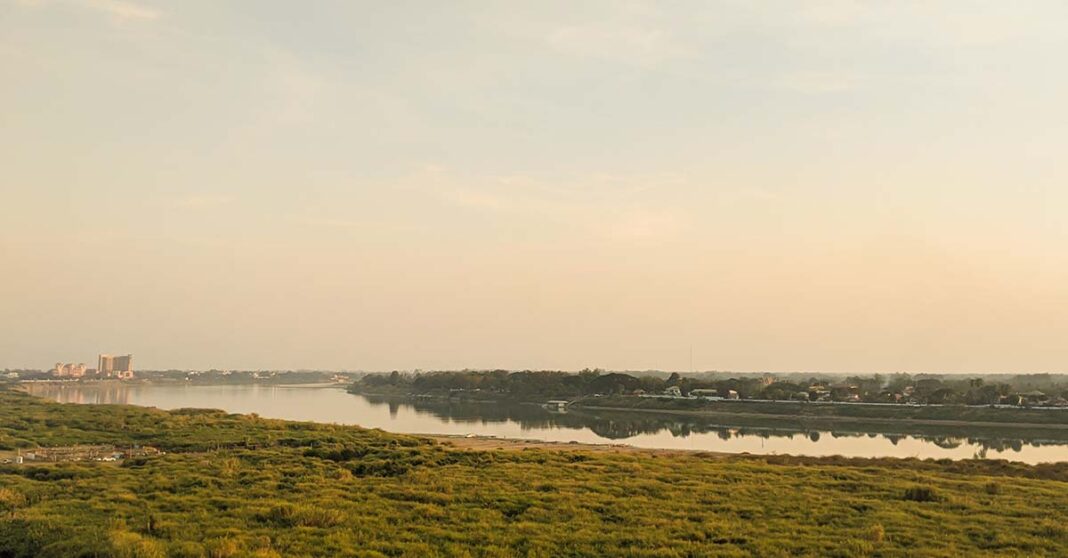The Mekong River Commission has called on Mekong countries to urgently discuss record low flows recorded over the last three years.
The Mekong River Commission (MRC) Secretariat has renewed its call for the six Mekong countries to urgently address regional low flows, water fluctuations and drought as the Lower Mekong River experiences record low flows for the third consecutive year.
During the last three years, flows in the Mekong mainstream have dropped to their lowest levels in more than 60 years, with 2020 being the LMB’s driest year when rainfall was below normal levels in every month except October, according to a new report.
The report, ‘Mekong Low Flow and Drought Conditions in 2019–2021,’ notes that since 2015 the hydrological regime has changed, with more dry season flow and reduced wet season flow caused by increased storage reservoir in the basin. This has resulted in both positive and adverse consequences.
However, the 2019–2021 period was exceptional due to highly reduced rainfall and worsening climate conditions.
“Together, these factors may have adversely affected fisheries and agriculture outputs, pressured the Delta people’s livelihoods, and threatened to disturb the Mekong Basin’s delicate ecosystems. Proactive cooperation is essential, not just from China but from all the MRC Member Countries, to jointly address these issues,” says Dr. An Pich Hatda, Chief Executive Officer of the MRC Secretariat.
The six countries can take some immediate steps to mitigate the crisis, according to Dr. Hatda. These include establishing a joint notification mechanism on unusual water level fluctuations, and in the future, exploring the coordinated operation management of reservoirs and hydropower dams.
In addition, the countries should examine options to build more storage to manage pressing drought and flood conditions, as well as an operational model for the whole Mekong Basin.
Using a heuristic approach based on the MRC’s available data of observed rainfall, flows and drought indexes, the report notes that several cumulative factors have led to the unprecedented change in flows.
The monsoon season usually produces a single flood peak, but water storage in the wet season in the Basin has contributed to delaying all-important flood pulses.
The 100-page long report also evaluated the impacts of low flows on reverse flows into Cambodia’s Tonle Sap Lake during the wet season, an important bellwether of the wider Basin’s hydrology. While reverse flows in 2019 were close to average, those in 2020 and 2021 were the lowest on record. Total reverse flows in 2020 and 2021 were 58% and 51%, respectively, of the average total reverse flow volume from 2008 to 2021.
The MRC Secretariat’s report further finds that storages constructed on the Upper Mekong Basin are not the primary driver of low flows to the LMB, but the combination of worsening climate and unusually low rainfall. Total water held back on the Upper Mekong Basin’s two largest reservoirs – Xiaowan and Nuozhadu – in 2019 was less than that in 2018, 2020 and 2021.
The report adds the question of the proportion of the flow held back in the Upper Mekong Basin versus the reductions in flows due to drought should be based on water balance modeling in each reservoir.
Coordinated operational management of the reservoirs may be key to relieving the worst impacts during the drought years, such as 2019–2021, and the MRC Secretariat is working with the riparian countries in support of this initiative. In the 2016 drought, China released additional water to assist the Mekong countries, an example of increased cooperation that can be replicated in the future.
The recently approved Joint Study between the MRC, Mekong Lancang Cooperation, and China on the Basin’s changing hydrological conditions, as well as the MRC Proactive Regional Planning, are expected to provide a more comprehensive picture of the situation and propose concrete solutions for the Basin countries, according to the report.



